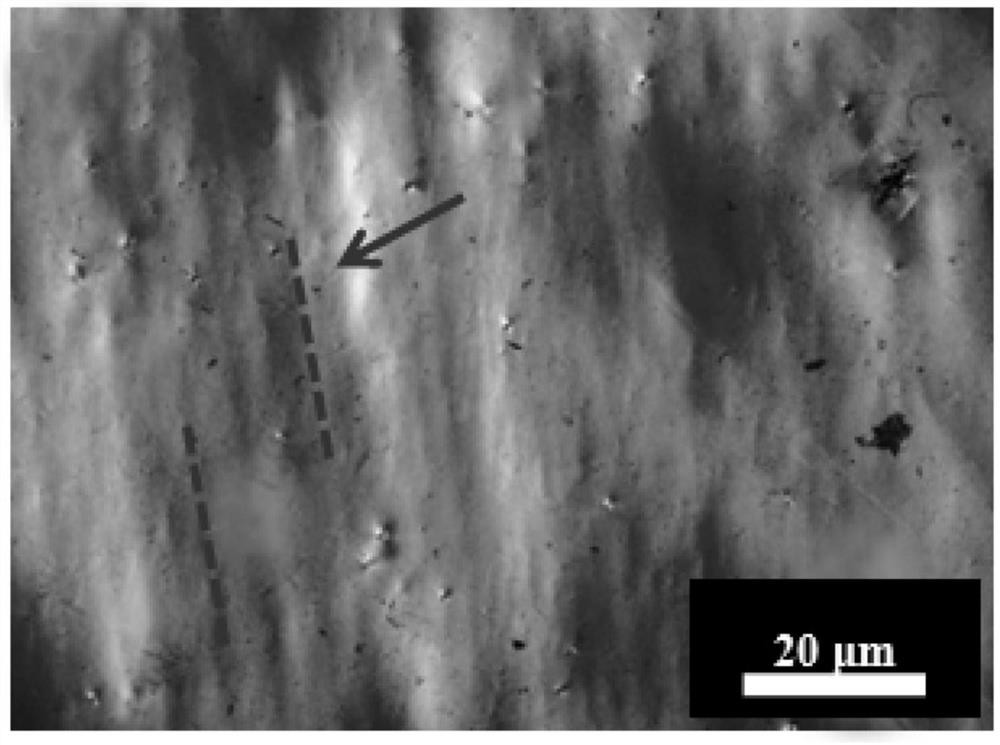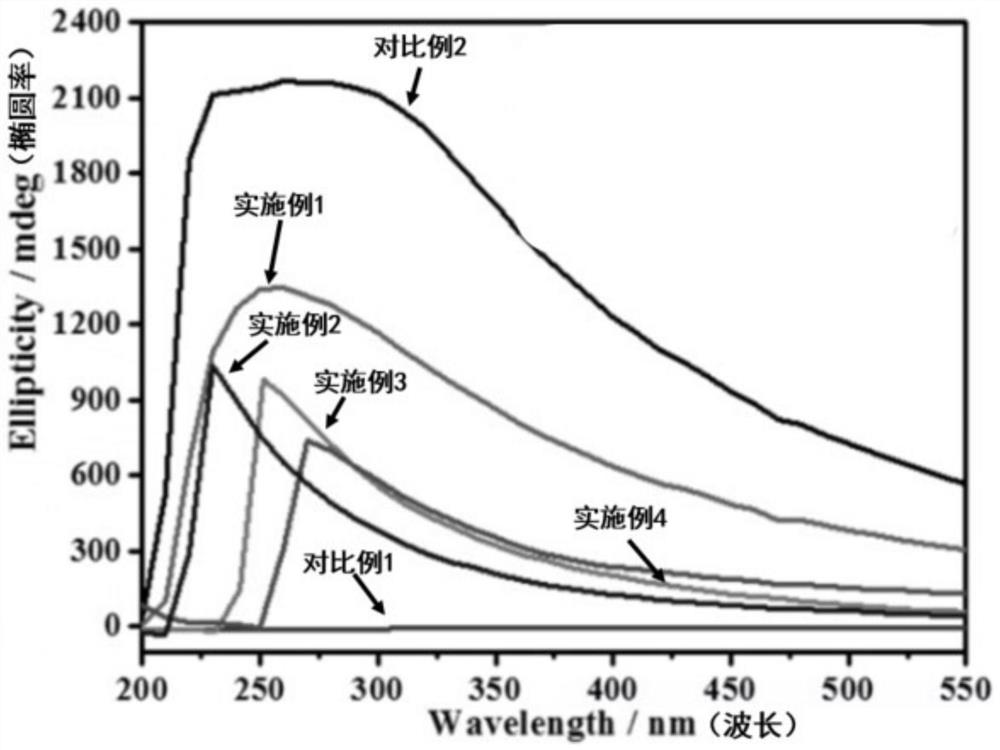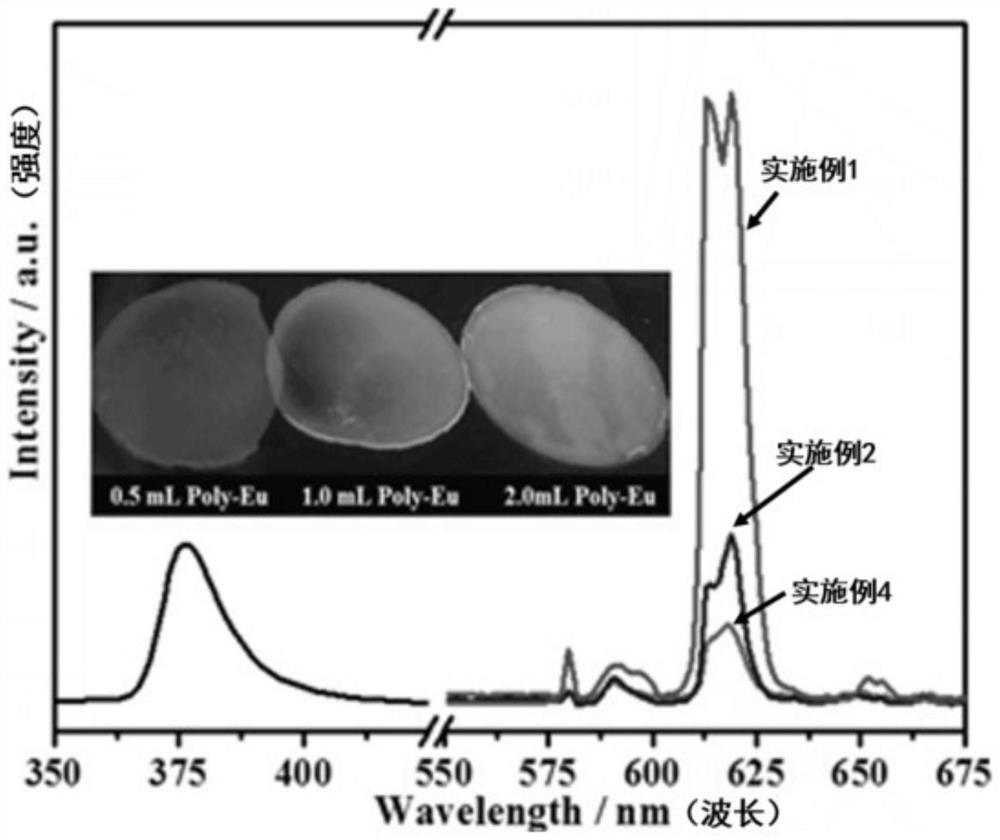A kind of preparation method of cellulose nanopaper with circularly polarized fluorescence emission
A fluorescence emission, cellulose technology, applied in chemical instruments and methods, luminescent materials, etc., can solve problems such as non-ideal brittleness, affecting the mechanical properties of nanoparticles, fragmentation, etc.
- Summary
- Abstract
- Description
- Claims
- Application Information
AI Technical Summary
Problems solved by technology
Method used
Image
Examples
preparation example Construction
[0032] A kind of preparation method of the cellulose nano paper of circularly polarized fluorescence emission of the present invention, specifically comprises the following steps:
[0033] Step 1, synthesizing 4-(4-vinylbenzyl)acetophenone (VBAP). Specifically: add 4-vinylbenzyl chloride (2-200mmol), 4-hydroxyacetophenone (4-400mmol), potassium hydroxide (4-400mmol) and N,N-dimethyl formamide (2-200mL) to obtain a mixed solution A, then stirred at 45°C for 12h under nitrogen, after the reaction, cooled the mixed solution A to room temperature, and used deionized water (20-2000mL) to precipitate the mixed solution A, It was then washed with deionized water, filtered, and dried in a vacuum oven at 45°C to obtain 4-(4-vinylbenzyl)acetophenone (VBAP) crude oil, which was recrystallized with ether to purify VBAP.
[0034] Step 2, synthesis of 1-(4-(4-vinylbenzyl)phenyl)-trifluorobutane-1,3-dione (VBTF);
[0035] Dissolve ethyl trifluoroacetate (1-100mmol) and sodium hydride (1-10...
Embodiment 1
[0044] Step 1, synthesizing 4-(4-vinylbenzyl)acetophenone (VBAP). Specifically: add 4-vinylbenzyl chloride (2mmol), 4-hydroxyacetophenone (4mmol), potassium hydroxide (4mmol) and N,N-dimethylformamide (2mL) to the reflux device respectively, The mixed solution A was obtained, and then stirred at 45° C. for 12 h under nitrogen. After the reaction, the mixed solution A was cooled to room temperature, and the mixed solution A was precipitated with deionized water (20 mL), then washed with deionized water, and filtered. The crude oil of 4-(4-vinylbenzyl)acetophenone (VBAP) was obtained by drying in a vacuum oven at 45° C., and the VBAP was purified by recrystallization with ether, with a yield of 93.2%.
[0045] Step 2, synthesis of 1-(4-(4-vinylbenzyl) phenyl)-trifluorobutane-1,3-dione (VBTF); ethyl trifluoroacetate (1mmol) and sodium hydride ( 1mmol) was dissolved in tetrahydrofuran (3mL), and stirred at room temperature for 10min to obtain a mixed solution B. The VBAP (0.5mmol...
Embodiment 2
[0053] Step 1, synthesizing 4-(4-vinylbenzyl)acetophenone (VBAP). Specifically: add 4-vinylbenzyl chloride (2mmol), 4-hydroxyacetophenone (4mmol), potassium hydroxide (4mmol) and N,N-dimethylformamide (2mL) to the reflux device respectively, The mixed solution A was obtained, and then stirred at 45° C. for 12 h under nitrogen. After the reaction, the mixed solution A was cooled to room temperature, and the mixed solution A was precipitated with deionized water (20 mL), then washed with deionized water, and filtered. The crude oil of 4-(4-vinylbenzyl)acetophenone (VBAP) was obtained by drying in a vacuum oven at 45° C., and the VBAP was purified by recrystallization with ether, with a yield of 93.2%.
[0054] Step 2, synthesis of 1-(4-(4-vinylbenzyl) phenyl)-trifluorobutane-1,3-dione (VBTF); ethyl trifluoroacetate (1mmol) and sodium hydride ( 1mmol) was dissolved in tetrahydrofuran (3mL), and stirred at room temperature for 10min to obtain a mixed solution B. The VBAP (0.5mmol...
PUM
| Property | Measurement | Unit |
|---|---|---|
| diameter | aaaaa | aaaaa |
| height | aaaaa | aaaaa |
Abstract
Description
Claims
Application Information
 Login to View More
Login to View More - R&D
- Intellectual Property
- Life Sciences
- Materials
- Tech Scout
- Unparalleled Data Quality
- Higher Quality Content
- 60% Fewer Hallucinations
Browse by: Latest US Patents, China's latest patents, Technical Efficacy Thesaurus, Application Domain, Technology Topic, Popular Technical Reports.
© 2025 PatSnap. All rights reserved.Legal|Privacy policy|Modern Slavery Act Transparency Statement|Sitemap|About US| Contact US: help@patsnap.com



